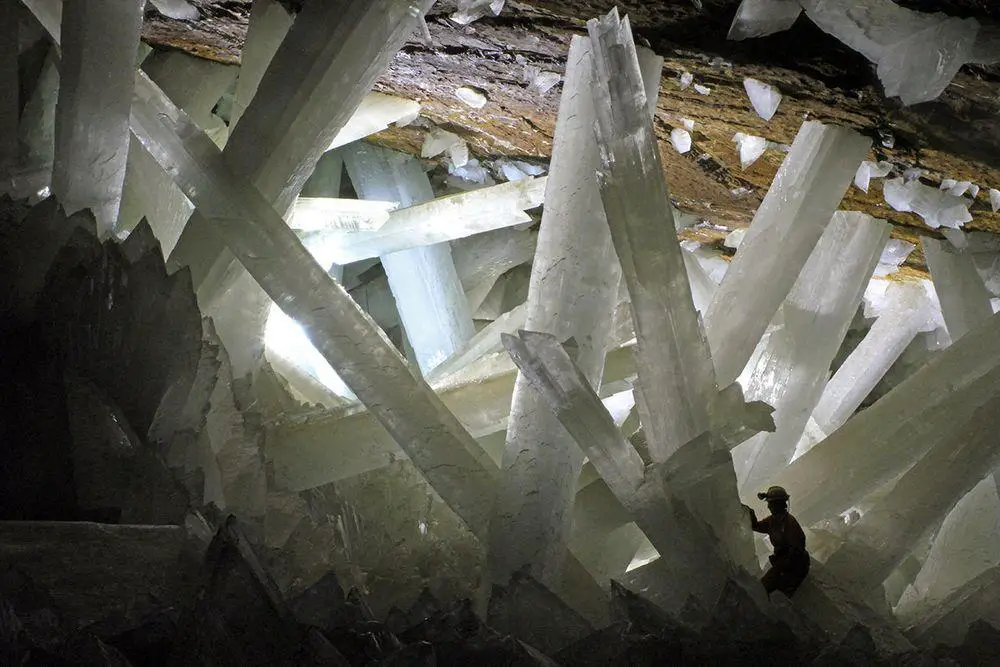World 🢖 Asia 🢖 Philippines
Karst landscapes 🢔 Rock formations 🢔 Geological wonders 🢔 Categories of wonders
Wonder
Chocolate Hills
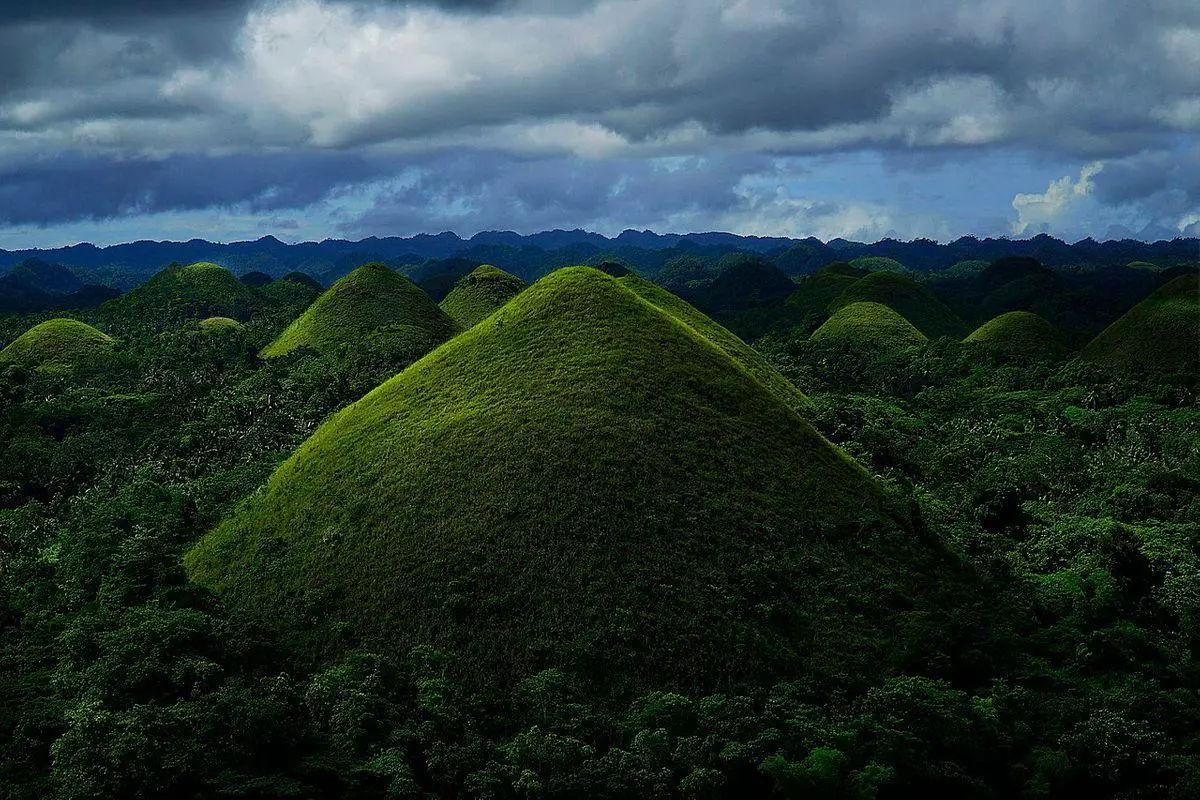
 In short
In short
When a visitor ascends one of the numerous Chocolate Hills on a clear day, he can admire a unique view: the plains up to the horizon are dotted with countless symmetrical hills. All these hills are eerily similar, with roughly the same height and form. The landscape is even more unusual in the dry period of the year when all the mysterious hills turn brown.
 58.7%
58.7%
GPS coordinates
Location, address
Name in Cebuano language
Area
Map of the site
If you see this after your page is loaded completely, leafletJS files are missing.
 In detail
In detail
Legends and history
Legends
Humans needed an explanation of this unusual landscape. Due to this locals have several legends about the origin of these hills. Maybe giants hurled piles of the ground at each other and then left the battlefield without cleaning up the mess. But maybe these are dried tears of an unlucky lover – a giant named Arogo.
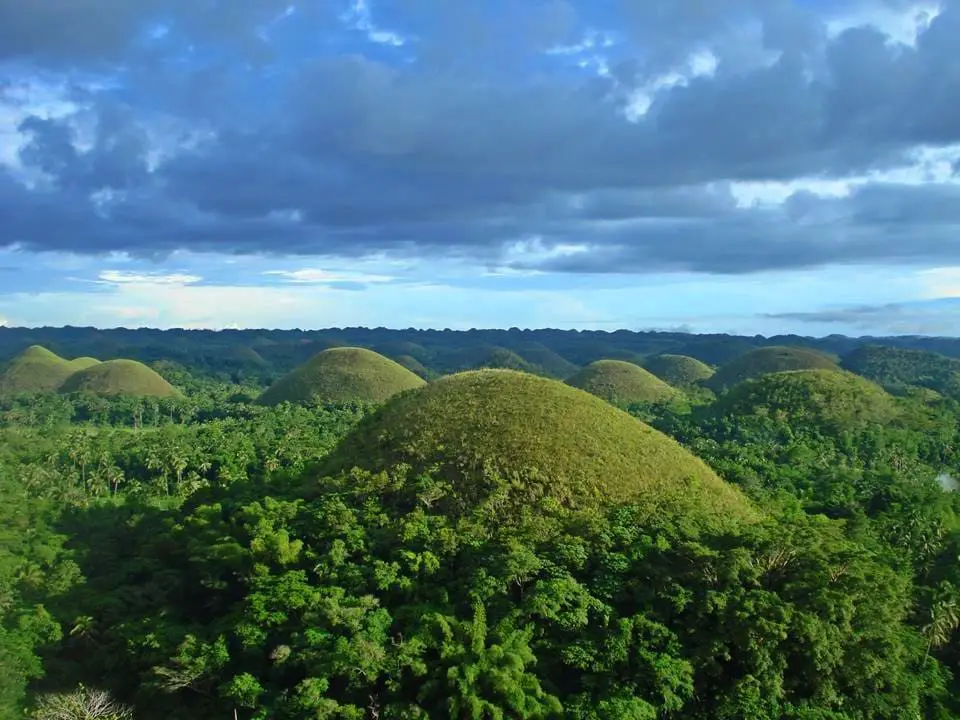
Present name
The present-day name of the hills is a recent invention by a foreign scientist. German geologist Frithjof Voss saw these amazing hills in 1968 and these mysterious (then) formations fascinated him. In a scientific publication from 1970, he used the nickname “Chocolate Hills” and after some while, the tourism industry took it up. Voss studied the hills with the help of aerial photographs and these studies channeled his career into the realm of aerial imaging and remote sensing. Thanks to this he became a key expert in this area worldwide.
Voss named the hills after their resemblance to a gastronomic treat – chocolate kisses just like the ones produced by “Hershey’s”. Before this some scientists have given other names, e.g. Smith (1924) named them Haycock Hills. But we could agree – Chocolate Hills sounds just nice and tasty!
Geological history
Chocolate Hills are some of the best examples of cone karst on our planet. But… what is “cone karst”?
Karst
Sooner or later water dissolves nearly every rock that exists on Earth. But some rocks dissolve faster: salt and gypsum rocks may dissolve in a few decades – centuries after their formation. Limestone or dolostone, though, dissolves over thousands of years and in the meantime forms amazing geological formations. Just like a melting heap of snow, limestone may form weird-looking, steep residual towers. Water creates channels and caves, streams disappear in holes and reappear somewhere else. All this interesting realm of geological processes in soluble rocks is named: karst.
Karst erosion in tropical regions
If the temperature is higher and there is more water, karst processes become more intense. Thus, in tropical regions, where rainfall is huge and the average temperature exceeds 18 °C, limestone dissolves much faster than in dry or cold regions.
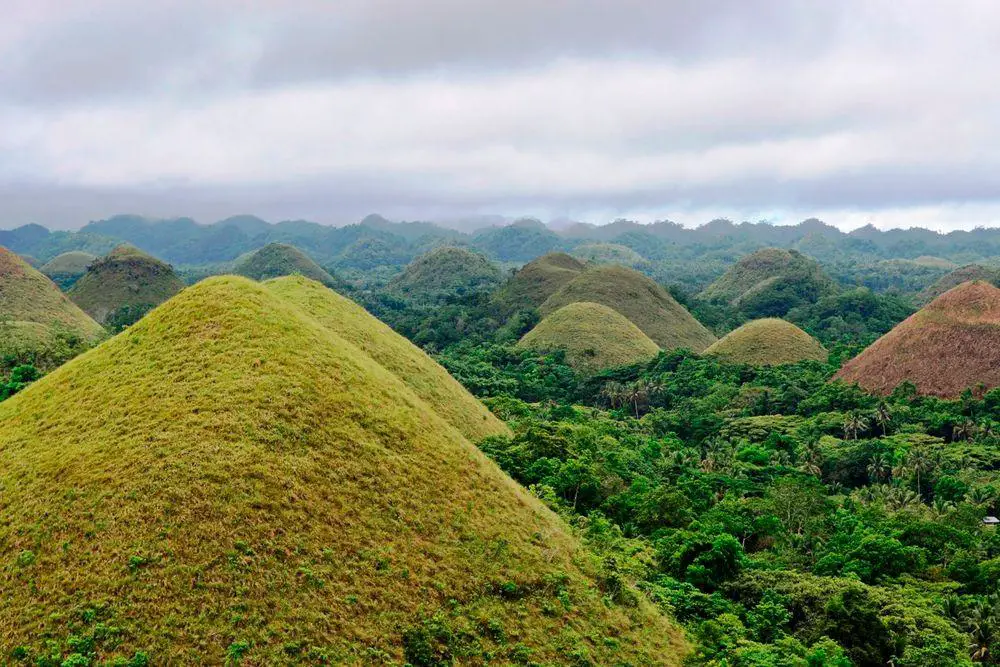
There are places in the tropics where wast, thick layers of limestone are well above sea level and exposed to intense karst erosion. This process has three main stages:
1. Cockpit karst is the first stage. At this stage, the water dissects the limestone layer with numerous caves and trenches. Caves grow larger and collapse, trenches are widening. As a result, a network of deep valleys dissects the limestone massif, leaving limestone ridges in between. Such impressive cockpit karst is in Jamaica, Cockpit Country – hence the name. Limestone soils are fertile – thus the hills and ridges most frequently are covered with lush forest. Of course, this landscape is very hard to penetrate – in most cases, the virgin rainforest still thrives on cockpit karst.
2. Then comes cone karst. As the erosion of the limestone continues, the limestone ridges are divided into separate cone-shaped hills. The larger (wider and longer) the limestone body, the more hills. Yes, and Chocolate Hills could be the most impressive cone karst landscape in the world.
3. Finally comes tower karst. As the karst erosion continues and the sides of the hills become steeper and steeper, at the end remain just a limestone tower. Or – many towers. One of the most impressive tower karst landscapes is Guilin – Lijiang Karst in China where these towers are hundreds of meters tall. As the years go by, the towers fall, dissolve, and… limestone is gone.
Geology of Chocolate Hills
Chocolate Hills consist of hundreds of meters thick Late Pliocene – Early Pleistocene limestone, which has formed on the seabed, above a layer of serpentine. Most of it is formed by corals. Soon after the formation this limestone was raised above sea level and fractured. Rainwater, streams, groundwater dissolved the limestone, gradually forming the present landscape of cone karst.
The repetitive, symmetric form of the numerous hills is explained by the fact that the whole limestone massif raised above the sea level at one time, and erosion processes were similar all over its area. Thus the limestone was dissected by fissures, streams, and caves at similar distances, and all the hills are shaped by the same natural forces. Climatic conditions, most likely, have been the same for a long time and even the distribution of wind direction is more or less evenly throughout the year.
The limestone of Chocolate Hills is rather fragile, sandy. It is rich with fossils – corals, mollusks, and others.
Hills and the whole area contain numerous caves and karst springs. On Bohol are known more than 1,400 caves, but few have investigated them and, most likely, this figure is a lot higher.
Number and extent of the hills
Chocolate Hills are scattered over a large area of Bohol Island. The number of hills is subjective – each can count them as he likes. Some have counted 1 260 hills, some – more than 1 700. In fact, it is not easy to tell where Chocolate Hills end and start other forms of karst landscape – e.g. cockpit karst, which also is widespread on the island.
The height of the hills fluctuates from some 40 m to 120 m and diameter from 65 to 80 m.
What makes Chocolate Hills unique?
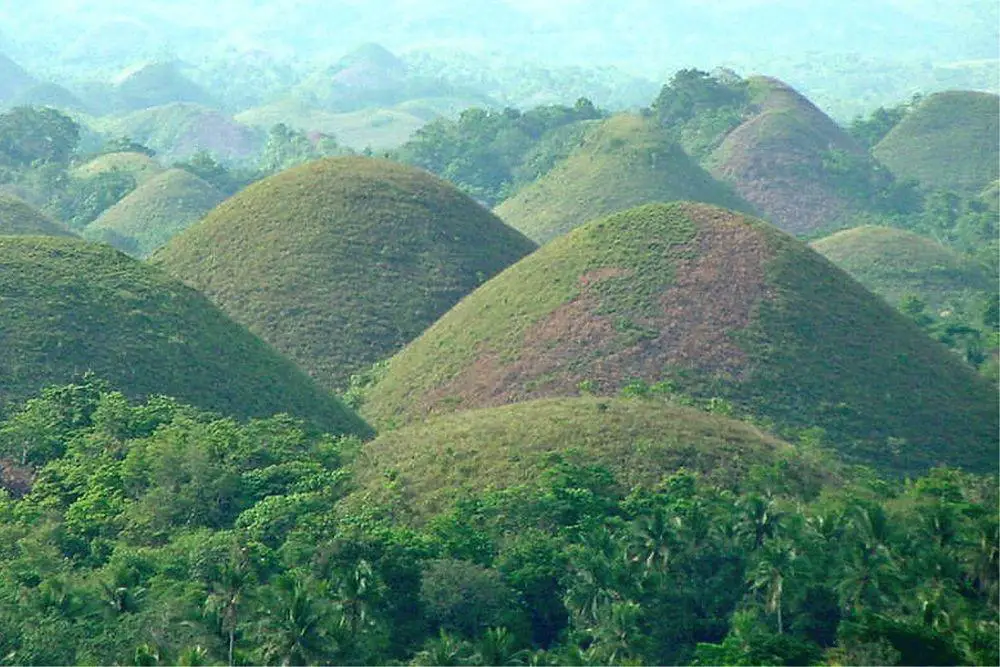
Cone karst is not unique to Bohol. Similar formations are found in many other tropical countries – several provinces of China, Jamaica, Cuba, Indonesia (Gunung Kidul area with more than 10 000 hills), the Dominican Republic, and others. Also on the nearby island of Negros, near San Carlos town can be seen similar hills.
But some aspects make the landscape of Chocolate Hills truly unique in the world. The main is: these hills have more or less perfect conical forms and are almost symmetrical. Their slopes are not too steep and cliffs are not exposed – slopes are covered with a uniform cover of grass. Hills always are round or oval, they never have notches or extensions.
Even one such hill is unusual. But if there are hundreds, more than a thousand of them? Landscape consisting of such “copy-paste” elements is unique.
An additional effect is created by the grass which turns brown during the dry season, which usually lasts from February to April. This unusual brown color gave the name to the whole landscape. Grass on the hills has several species, such as Imperata cylindrica and Saccharum spontaneum, here grow also some species of ferns and other plants.
Tourism and nature conservation
Originally Bohol was covered with dense rainforest, although Chocolate Hills, most likely had too weak soil to sustain forest on the steep slopes of the hills. After centuries-long slash-and-burn agriculture, most of the rainforest is gone and now plains between the hills are cultivated – here is grown rice and other crops. Only some 3% of the former virgin forest remains on the island.
Since the 1980ies when the Philippines and also Bohol Island opened to international tourism, Chocolate Hills became a major tourist attraction. The value of Chocolate Hills was recognized by the government and in 1988 there was created The Chocolate Hills Natural Monument, now – “Chocolate Hills” National Geologic Monument. This was not an easy step – the nature conservation efforts led to civil unrest among local farmers, leading to at least two clashes between local guerillas and government forces.
The increasing number of tourists also does not come without challenges: the local tourism industry and authorities thus far are struggling with the proper organization of tourism services. Nevertheless, Chocolate Hills now is the most recognizable natural landmark of Bohol Island and to some extent – all the Philippines and step by step people in Bohol start to earn the benefits of tourism income.
Authorities have developed a viewing deck – Chocolate Hills Complex – near Carmen, where visitors from the summit of one of the hills can enjoy the unusual landscape and learn about the geological history. Another viewing platform is on the top of Sagbayan Hill.
Danger of mining
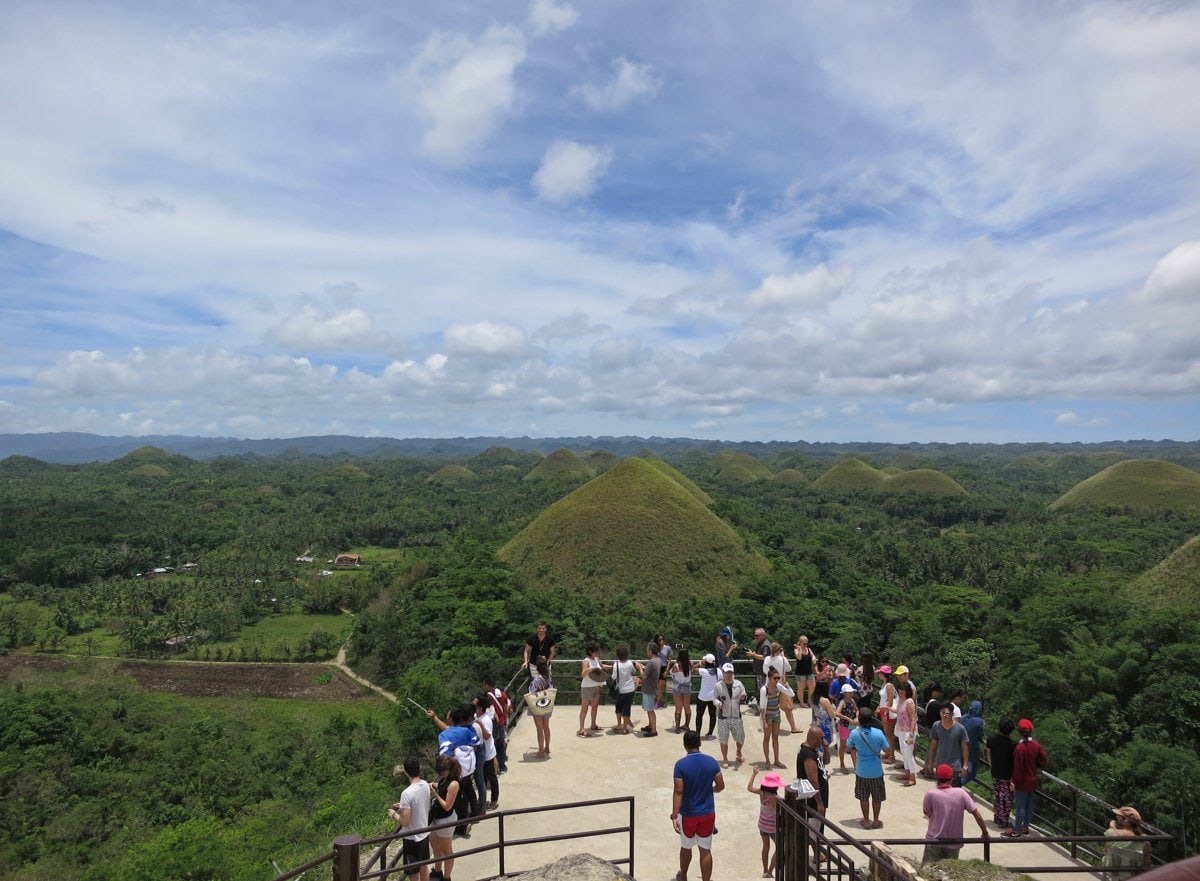
The limestone of the hills is an important construction material – some hills were just removed by mining. Although the government has strictly forbidden such mining since 2006, locals often continue this activity.
In September 2019 the authorities approved the Chocolate Hills Protection Bill, again completely forbidding any destruction of Chocolate Hills. Trespassers who “successfully” have destroyed one of the hills could be imprisoned for up to 12 years (2).
References
- Jean-Noël SALOMON, A Mysterious Karst: the “Chocolate Hills” of Bohol (Philippines), Acta Carsologica, Vol 40, No 3 (2011), accessed in 21st November 2018.
- Renz Antoni, House pushes for Chocolate Hills act, The Manila Times, September 3, 2019, accessed in 14th October 2019.
Chocolate Hills are included in the following list:
 Linked articles
Linked articles
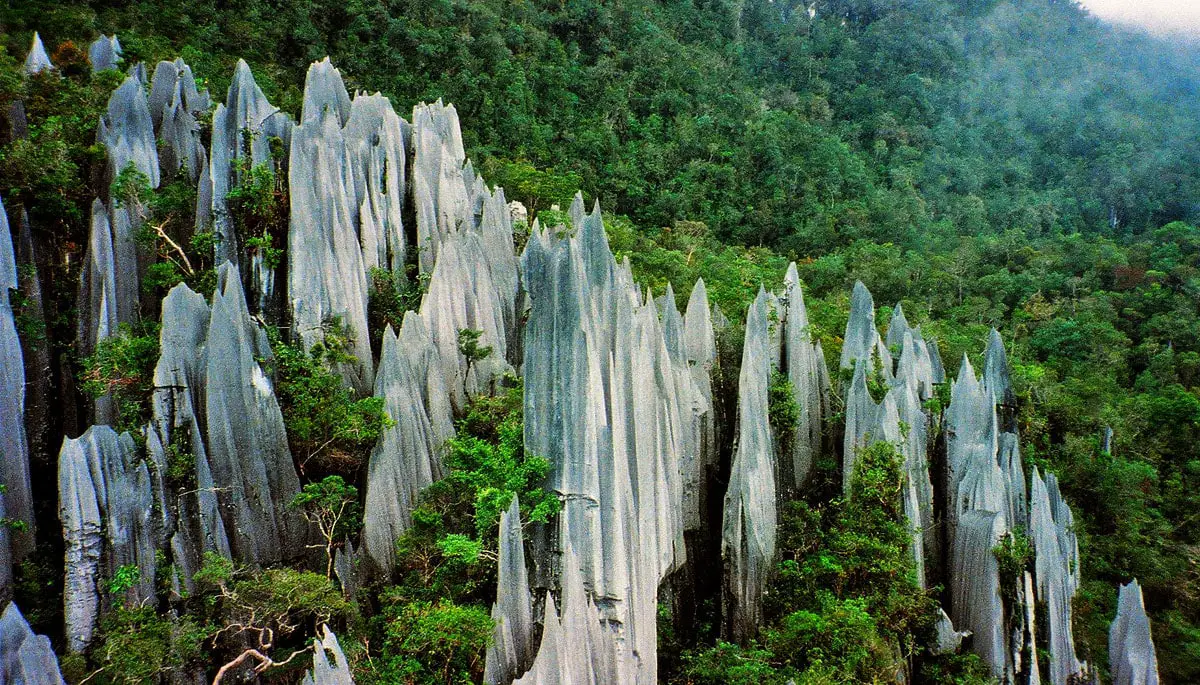
Karst landscapes
This category includes those places of the world where a larger area of soluble rocks is exposed and water has shaped unusual terrain from this rock. And, well, some of these places are VERY unusual!

Wonders of Philippines
The charming Philippines in many respects represent the true Southern tropical paradise. This archipelago consists of thousands of diverse islands and the wealth and diversity of the countless landmarks here are hard to grasp.
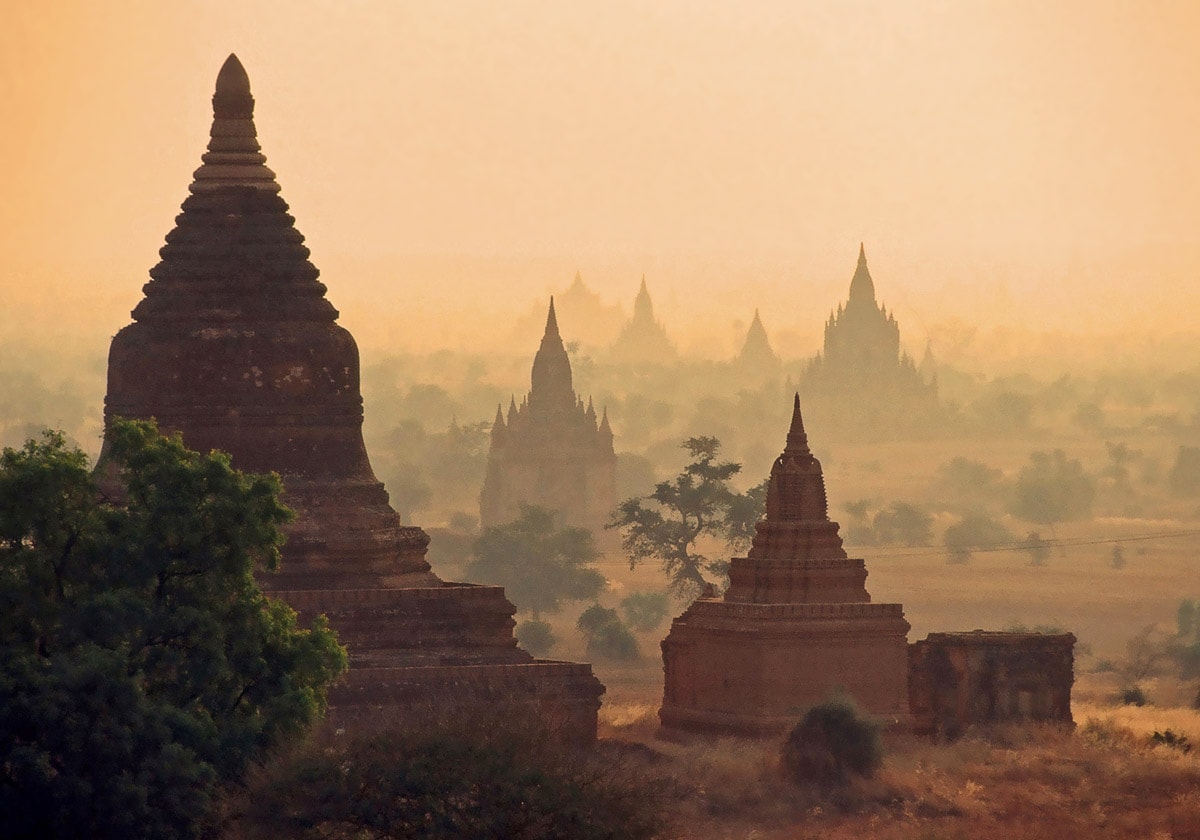
Wonders of Asia
Any other continent (and part of the world) seems small if compared to Asia. This refers also to natural and man-made heritage: in Asia are not just thousands of great landmarks, there are found landmarks created by thousands of diverse cultures from ancient Phoenicians to the mysterious small people in the Philippines and eastern islands of Indonesia.
 Recommended books
Recommended books
Bohol Travel Guide
The Philippines Insider – Bohol Travel Guide was written by me about a place I love. I have lived in the Philippines for close to 15 years and Bohol is one of my most favorite places to visit. When friends ask where’s the one place they should go when visiting here I always answer with no hesitation, “BOHOL!”
Geomorphological Landscapes of the World
This book offers the latest information on the geomorphology of selected “classic” sites from around the world. It also shows a variety of landscapes as molded by different processes over different timescales, ranging from millions of years to just a few days.

